Inside the dream factory that feeds the Indian cricket supply chain
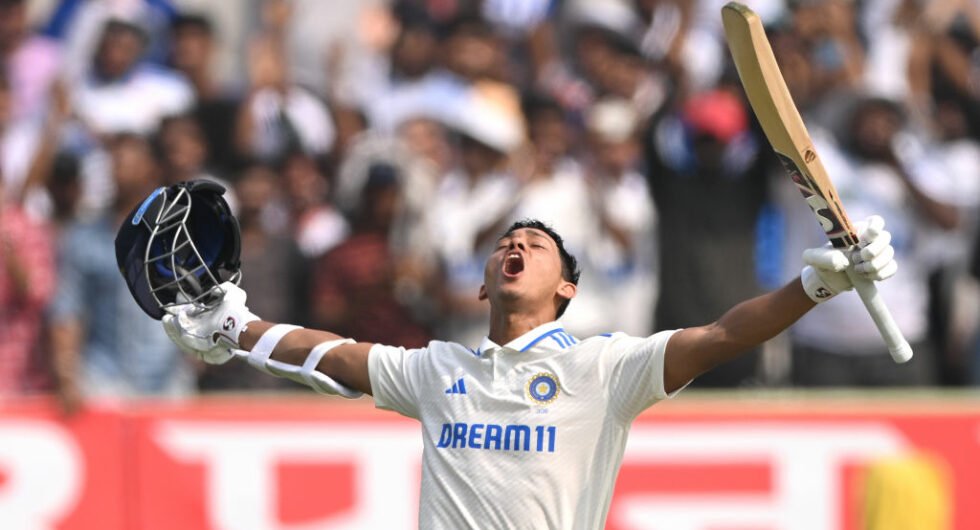
 by Aadya Sharma
by Aadya Sharma
@Aadya_Wisden 15 minute read
Every year, in the build-up to the IPL, India’s conveyor belt churns out more young male talents of outrageous skill, each of them desperate to make the grade. But behind the shimmer and promise of Indian cricket, what is life really like for those on the edge of fame and fortune? Aadya Sharma investigates India’s dream factory. This article first appeared in issue 74 of Wisden Cricket Monthly. Buy the magazine here.
On April 24 last year, India officially supplanted mainland China as the world’s most populous country, an event coinciding with milestone man Sachin Tendulkar’ 50th birthday. India’s literal one-in-a-billion megastar, Tendulkar’s legacy lies not just in the numbers he stacked up, but in the philosophy his success gave birth to: the idea that this titanic country can throw up the world’s greatest player from within its
million folds. Virat Kohli has since held that mace.
Today the sheer scale and range of India’s talent pool is beyond comprehension. Just this month, a 12-year-old Bihar left-hander made his first-class debut in the Ranji Trophy. For context, even Sachin was 14 when he first walked out for Mumbai. India’s obsession with the sport is closely linked to its fascination with hero stories – the idea of one rising over the rest to lead the way is a tantalising fantasy. Mediocrity has no place anymore; and the younger you are, the better the story. There’s a never-ending quest for the next Sachin, the next Virat. It’s relentless and giddying.
Kohli’s stardom sprang from the U19 World Cup in 2008, also the birth year of the IPL. The stratospheric nature of the man’s fame and wealth has come to seem intrinsically linked to the tournament’s burgeoned power and heft, combining to symbolise the hegemonic apogee of sporting-commercial success. The rest of the game can only imagine what it looks like from up there.
Breaking through as a teenage Indian cricketer sounds like the best thing in the world, but it can also feel like the worst. Prithvi Shaw has seen both sides. Prophesied as the next Sachin by the ICC and several others ahead of the 2018 U19 World Cup, Shaw duly captained that India team to the title with the number 100 emblazoned on his back, and waltzed into the senior team, making a 99-ball hundred on his Test debut in 2018. But thereafter the merriment stopped. By Shaw’s own admission, the heady concoction of wild success, jarring rejections and off-field controversies has caused serious cracks in his personal life.
“People say a lot of things about me,” Shaw told me last July. “But those who know me, know how I am. I don’t have friends, I don’t like to make friends. This is what’s happening with this generation.
“You can’t share your thoughts with anyone. If you ask me personally, it’s very scary. Darr lagta hai aajkal [I am scared these days] to share my thoughts. Agle din social media mein aa jaata hai [It all gets posted on social media the next day]. I’ve very few friends, only a couple of friends, and even with them I don’t share everything, only a few things.”
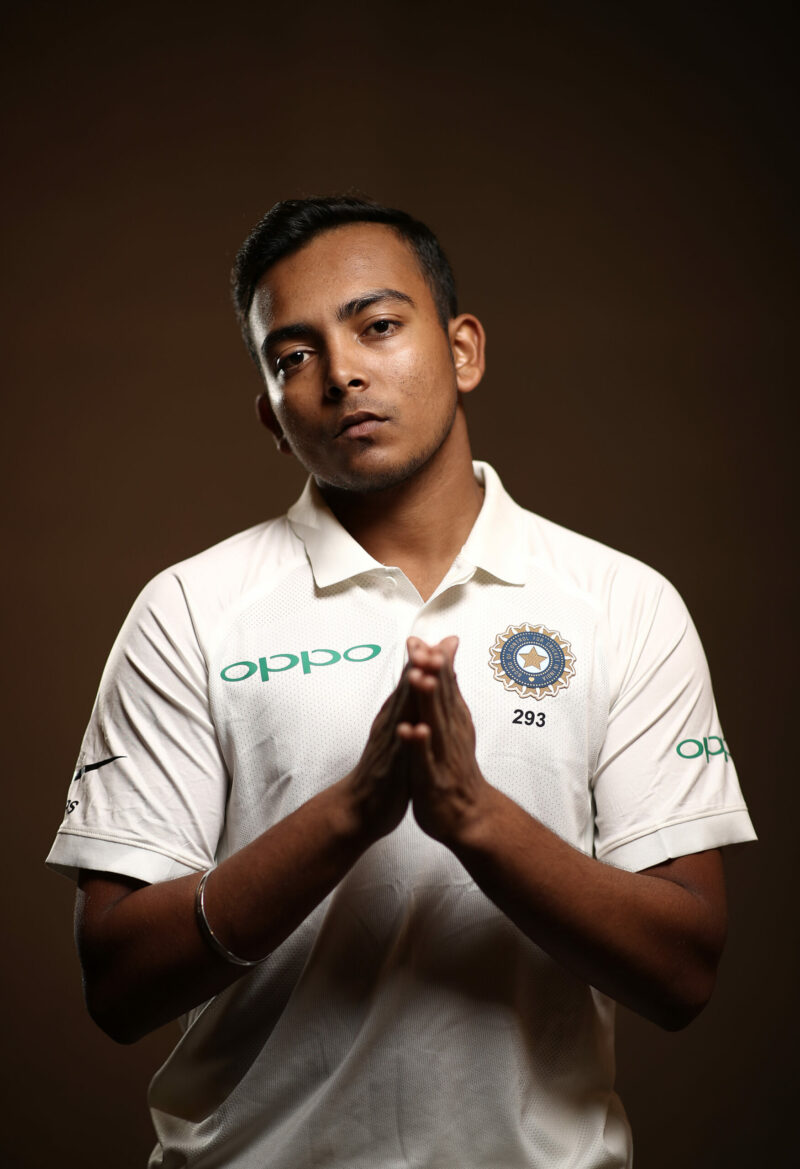
Prithvi Shaw made his Test debut as a teenager in the same year he led India to the U19 World Cup title
Fame has brought out the reclusive side of Shaw: he goes to theatres alone, masked up to avoid attention, or sits by himself in a room. “Whenever I get up, whenever I am meeting someone, even if I am sad or disappointed, I never make the other person feel that I am going through something. Whatever it be – anger, crying – I do it in my room. Once I open my door, I am smiling again.
“These days, I’ve been going out alone even for lunches and dinners. I’ve started enjoying being alone now.” Shaw is still just 24 but hasn’t played for India in two-and-a-half years. With each passing day, the competition gets tougher.
While the enormity of India’s talent pool drowns thousands of dreams, the game’s changing topography has widened the pond more than ever before. As Shaw’s cautionary tale shows us, no single player’s place at the top is certain. Still, nonetheless, the origin stories of many of those who made it to the summit remain sufficiently fantastical to generate a whole industry.
Jwala Singh, a Mumbai coach, found an 11-year-old Yashasvi Jaiswal in an Azad Maidan tent, scratching to make a life out of cricket in Mumbai, thousands of miles away from his parents in the small town of Uttar Pradesh. Jwala took the boy under his wing, becoming his legal guardian for the next seven years, through which Jaiswal climbed the rungs of age-cricket, then U19, state and IPL. Today, he is India’s Test opener.
Rinku Singh, 26, rose from despairing poverty and debt to become India’s next T20 star: his first job was to mop the floor of a coaching centre, which he refused to do, taking refuge in his dreams of a cricketing career. For five years, he mostly sat on the sidelines in the IPL, before one over – and five sixes – turned everything around.
Tilak Varma, the son of an electrician, was spotted one Sunday morning by his future coach, Salam Bayash, playing tennis-ball cricket in a corner of Hyderabad. Given his family’s finances, it took a while for Bayash to convince his parents to let Tilak take up serious coaching. To reach his academy, Tilak would travel 40 kilometres every day, clinging to the back of his coach on a motorbike. He’s now a regular feature in India’s T20I middle order.
These are just a few examples of the IPL’s much-celebrated rags-to-riches machine, but it also comes with a rider; early money can make or break a young player’s spirit. “The mental shock, especially for U19 players, is big,” Jwala tells WCM. “Nobody knows these boys before the U19 World Cup. Most times, the IPL auction happens either right before or post the U19 World Cup. They have just played selection matches, most of the kids have not even played for their state teams. They don’t have first-class players around them. Suddenly, they’re playing with seniors and the world’s greats. The transition isn’t easy for everyone.”
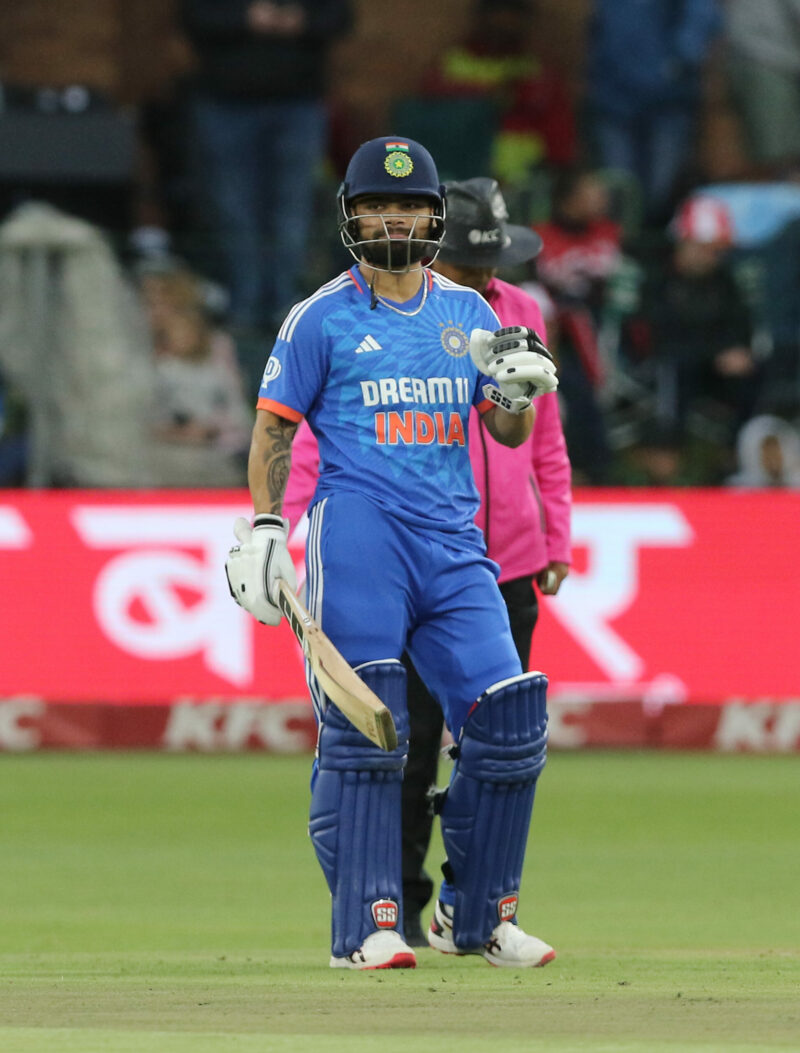
Rinku Singh has quickly become one of the most highly regarded T20 finishers in India
Teenagers who get into the India U19 side get an early feel of the blue kit, a sentiment that can simultaneously drive you towards the bigger goal and offer a false sense of security.
“As a player, you need to be very careful when you get early success: it’s obvious your behaviour changes,” says former India cricketer Ajay Ratra, now a BCCI Level-3 coach who’s worked at the National Cricket Academy. “We do one-on-one counselling and even talk in groups about it. Whenever we sense the cricketer’s collar khade ho rahe hain [his collars are up – he’s overconfident], or other activities are eating into his cricket time, we speak to the players.
“The other day, I was talking to Rajib Datta, the bowling head at NCA. We were discussing statistics: those who have played India U19 haven’t been as successful, be it first-class or India. In the same batch, those who missed U19 were most successful. The reason seems clear: skill-wise, they were successful, that’s why they played U19. But they couldn’t do the same for their first-class teams or India. It comes down to mental strength. Sometimes, you carry around the glamour [tag] of playing India U19 – and if you are a champion, even more.
“As a coach, we keep telling them: ‘Boss, your real cricket starts now with first-class cricket.’ U19 will only give you an entry. In age-groups, you can be successful, but when you come to the real world, that’s when good teams and senior players catch your mistakes early.
“In your first year, you can get carried away, and when teams don’t know you much, you can still be successful. But from the second year onwards, when they analyse your data and videos, they work you out. It can be a big challenge. If you win the U19 World Cup, nothing like it. But that’s just the start. It’s not a big milestone that you can rest on. You might need to work even harder to be successful in first-class cricket.”
The digitisation of India has handed 1.2 billion phones to the public, and affordable data packs have taken the internet into the deep, dark recesses. Social media currency is real: the life you live on the internet can define how the public perceives you. And in the jostle for power, young cricketers fall into the cycle of hollow image-building.
Varma now has 1.4 million Instagram followers, but it’s quite possible that he has little to no involvement in the actual posting of content. When I met him for the first time in Potchefstroom, during the 2020 U19 World Cup, he did not own a mobile phone, unlike his other India teammates. It was impressed upon him from the start that social media wasn’t a pit he could afford to fall into.
“From the start, there was no scope to while around,” his coach Salam Bayash told me after Varma had become an IPL star, and on the eve of his debut for India. “Cricket is his life, etched in his mind. He was told not to use the phone a lot, just check a little two-three days in a week. He hands it over to his brother. Media, social media, Facebook, Instagram – he still stays away from it all.”
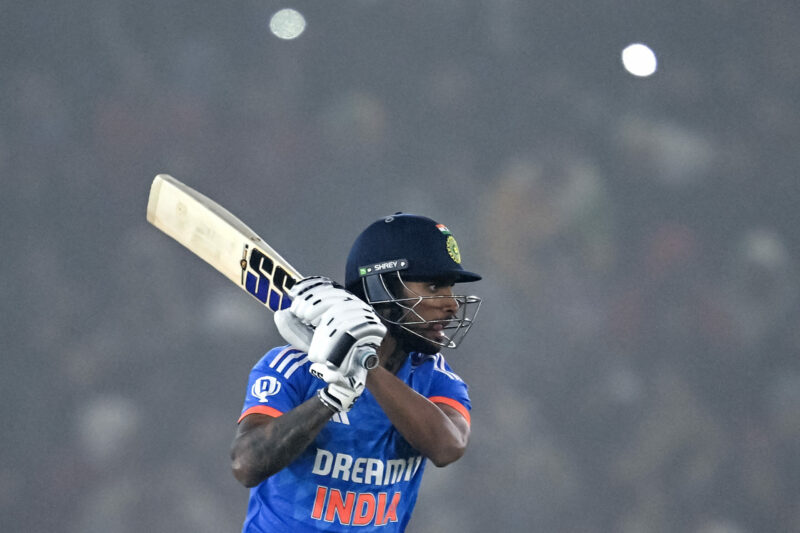
Tilak Varma, 21, has only played a handful of white-ball internationals but already boasts more than 1.4 million Instagram followers
“You get connected to unknown people,” says Jwala. “There are people that will try to connect with you, some might not be good for the game. They will be sending messages. Social media is the biggest distraction, but it is also part of life. Those aged 19-21, if they stay away from this distraction, their careers might get longer, because if you are playing sport, your focus has to be there, not on who is managing you or what you are getting after play.”
“I switch off my phone,” Shaw says. “The mood instantly becomes better. Everything gets into your head because of social media.”
Keerthana Swaminathan, president of the Indian Sports Psychology Association, who has worked with IPL teams and their junior academies in the past, feels that it’s a transition phase that teenagers of today, not just teenage cricketers, have to go through.
“I think any teenager today needs the validation of social media,” Swaminathan tells WCM. “I’m not just talking about sports, any teenager. That’s how it’s become right now. It’s become a normal part of their lives. We have also come to the other side, we probably need to accept that’s the change all of them need to go through.”
“With regard to cricket, there’s a lot of pressure, it’s very important to maintain that kind of presence. It’s very important to have a certain follower count. Again, it’s all about credibility. It’s not really about anything else. It’s more about how they are, how people perceive them.
“A lot of them attach their losses to them being a bad cricketer or ‘loser’ or whatever is the narrative in their head. It does impact their self-esteem a lot. It impacts their self-efficacy a lot.
“And the way they look at themselves – [there are] some who look at themselves the same way. Some understand that social media is not the only way to understand who they are. But some don’t. Of course, it does affect them. And it does put a lot of pressure as to ‘This is how I have to appear’.”
More than anything else, the single-biggest enemy for young players can be insecurity. The path can be so fickle that even one misstep sends you miles into the gorge, far away from your competition. Each fall can be a big setback, chipping away at your hopes and dreams. For every Jaiswal, there is a Divyaansh Saxena, another of Jwala’s pupils. Jaiswal’s opening partner at the 2020 U19 World Cup, Saxena’s progress was thwarted by Covid-19: each wave brought along indefinite lockdowns, no playing opportunities and no camps – and as the frustration grew, it reached a point where Saxena even pondered if giving up should be an option.
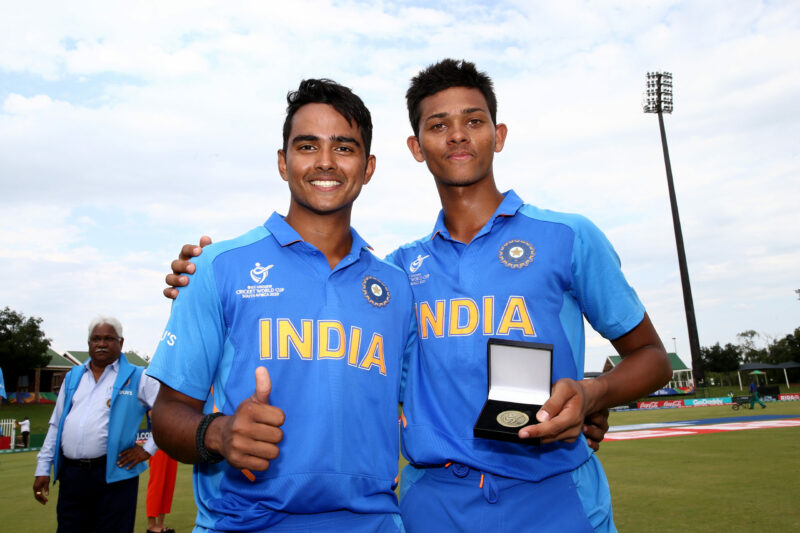
Divyaansh Saxena (l) and Yashasvi Jaiswal (r), India’s opening pair in the 2020 U19 World Cup. Jaiswal currently opens for India’s Test side, Saxena has only ever played one first-class match
His love for the game kept him going, and he has been scoring heavily at the U-25 level, but has played just one Ranji Trophy game for Mumbai to date, considered one of the toughest sides to get into. With seniors like Ajinkya Rahane still in the Mumbai squad, certain spots remain out of reach.
“I’ve seen a lot of athletes, especially at that age: they only think about cricket – that’s the only driving force,” says Swaminathan about teenagers. “They’re not thinking about anything else. And you know how cricket is – anything can happen.
“You may be the best and you may not get selected, because that day, you may or may not end up playing as well as you should have. Or you normally would have. Because of that, the pressure is too much for them. At any age, cricket pressure is a lot. But at that particular age [teenage], I think there’s a lot of pressure from home also.
“On one side, they [family] may end up saying: it’s cricket, you have to give it a shot, no matter what, we’ll support you – and that also is pressurising sometimes. And on the other side, they might end up asking them [the kids] to make a decision.”
“They may not really wait until they can actually peak or may get another chance. So there’s the pressure of ‘Can I opt for this? Or am I supposed to change my career? What do I do?’ And there’s a lot of identity crisis also now, you don’t know where you want to identify yourself. That’s something I’ve seen a lot with these young cricketers.”
It can’t be an easy ride, but today, these teenagers have opportunities like never before. The India U19 setup, helmed for years by current senior head coach Rahul Dravid, has been instrumental in creating an impressive pathway.
Ratra explains the structure: at the state level, there are two main U19 competitions – Cooch Behar Trophy (four-day cricket) and Vinoo Mankad trophy (one-day cricket). Based on their state performance, 25 players each are divided into NCA camps, now with the addition of a sixth from the North-East zone. In all, about 150 players get an opportunity to go forward.
Ratra notes how the batches are mixed miscellaneously – earlier, they used to be representative of their zone, and each camp would have their own kind of culture. Now, all camps have players from multiple zones.
These teams play 5-10 leagues matches to bring down the shortlist to 18 each. “They also keep a few players who are not eligible to play U19 to maintain competition for the youngsters [each player can only play one U19 World Cup].”
A country-level National Cricket Academy camp is then conducted, choosing the 25 best players for the India U19 team. Beyond the state U19s, 30-35 more players are added to the existing batch to create the Men’s U19 ODI Challenger Trophy squads. At the recent quadrangular series against England and Bangladesh, India U19 had two teams – A and B – with 15 players each. Players are rotated to expand the opportunity pool.
It isn’t limitless though. The talent runs deeper, and so do the eyes. The IPL model, despite its mad money and obvious ills, can also be a fruitful talent spotter. IPL scouts are able to fill the gaps that the BCCI can’t reach, going remote in the quest for a differentiating factor. Additionally, the IPL template is being rehashed at a rapid rate by state teams, some of whom have set up their own T20 leagues.
Now, even if the traditional path can be a hard one to climb, there are still alternatives, albeit tilted towards the shorter format. Hyper-local scouts and regional T20 leagues are pushing boundaries, tapping into India’s unswept corners. The next generation of cricketers could be defined by how deep the system runs.
In December, Robin Minz became the first indigenous player to make it to the IPL, handpicked by the Mumbai Indians scouts after scoring heavily in the zonal U19s. He now has an INR 3.6 crore contract without playing a game of professional cricket.
Prince Choudhary too hasn’t played any senior cricket yet, but now has an IPL gig thanks to the East Delhi Premier League, a local T20 tournament organised by cricketer-turned-politician Gautam Gambhir in his political constituency.
Former India U19 batter Sameer Rizvi, now 20, dubbed the ‘right-handed Suresh Raina’, made his state debut four years ago, but couldn’t quite capitalise on it. Now, through the Uttar Pradesh T20 League where he struck at 188.88, Rizvi is back in the spotlight. A whopping INR 8.4 crore IPL deal, the second-most expensive among all Indian players in the auction, tells you how a slight detour isn’t so bad anymore.
Gone are the days when future cricketers sprung out of traditional powerhouses – Mumbai, Delhi, Chennai, et al. We’re now delving further into India’s layers, and drilling out even more gold. It’s glitzy and murky at the same time.
India’s next one-in-a-billion megastar could emerge from any of the 38 teams that play first-class cricket, or through the U19 set-up designed to prepare teenagers, or one of the several T20 leagues, the unofficial talent-hunters of the sport, or elsewhere. Whoever it is will need more than mere talent to flourish.
Welcome to India: cricket’s great, grand colosseum. Where only the strongest and most nimble survive.
Subscribe to the Wisden Cricket YouTube channel for post-match analysis, player interviews, and much more.

